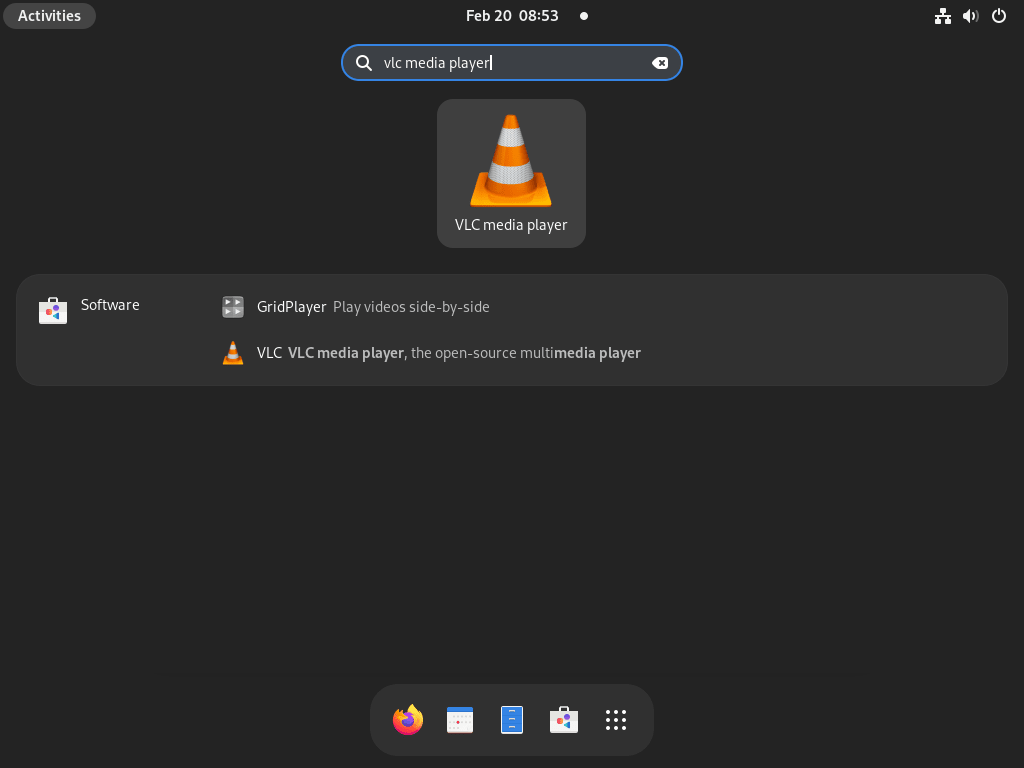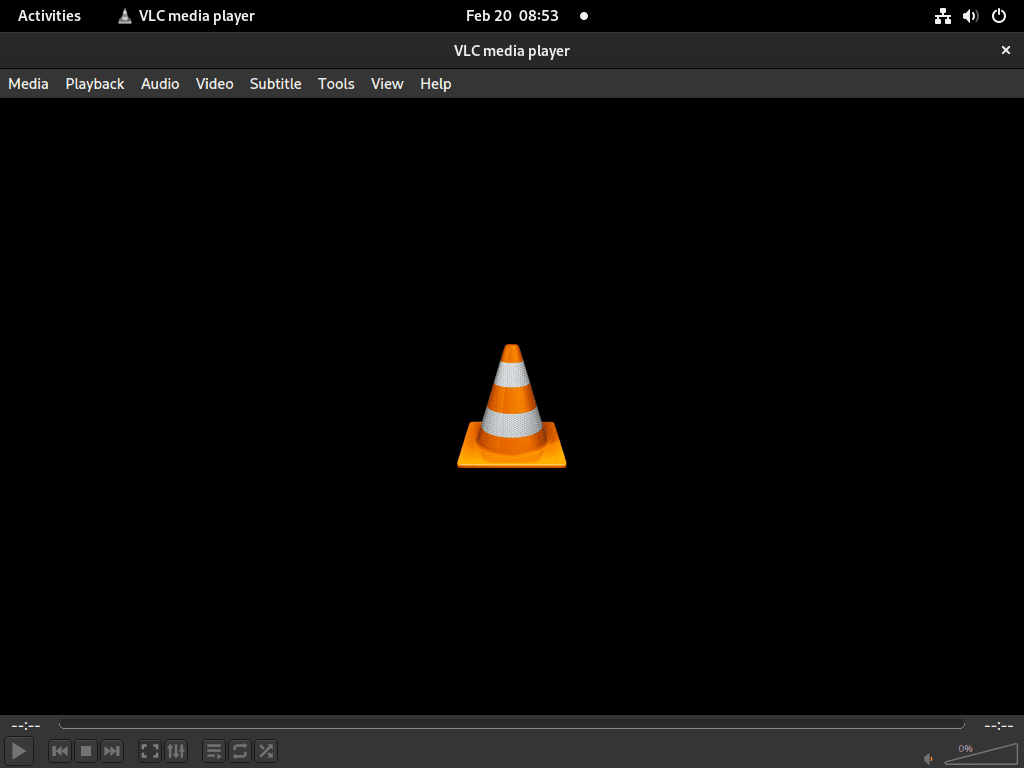VLC Media Player handles virtually any audio or video format you throw at it, from common MP4 and MKV files to DVDs, network streams, and obscure codecs that other players reject. Whether you need to watch downloaded movies, stream internet radio, convert media files, or play disc-based content, VLC provides a reliable, ad-free solution. By the end of this guide, you will have VLC installed on Fedora and ready to play media files immediately.
Choose Your VLC Installation Method
| Method | Channel | Updates | Best For |
|---|---|---|---|
| RPM Fusion | Third-party repository | Via DNF with system updates | Users who prefer traditional package management |
| Flatpak | Flathub | Independent, often faster releases | Users who want sandboxing and newer versions |
Recommendation: Most Fedora users should choose RPM Fusion. It integrates with DNF (Fedora’s package manager) for seamless system-wide updates and uses fewer resources than sandboxed alternatives. However, choose Flatpak if you specifically need application isolation or want the newest VLC releases before they reach RPM Fusion.
Update Fedora Before Installation
Before installing new software, update your system to ensure package compatibility and avoid conflicts. If DNF feels slow during updates, consider optimizing DNF configuration to speed up repository metadata downloads:
sudo dnf upgrade --refreshMethod 1: Install VLC via RPM Fusion
VLC is not included in Fedora by default. Specifically, Fedora’s strict free software policies exclude VLC due to patent and licensing concerns around multimedia codecs, so you must add a third-party repository first.
Import RPM Fusion Repository
The RPM Fusion repository provides VLC and other multimedia packages that Fedora cannot distribute directly. The “free” repository contains open-source software with licensing restrictions (patent concerns), while “non-free” holds proprietary packages. To begin, import the free repository with the following command:
sudo dnf install https://download1.rpmfusion.org/free/fedora/rpmfusion-free-release-$(rpm -E %fedora).noarch.rpmAdditionally, you can add the non-free repository for access to proprietary codecs and drivers. This is not required for VLC but useful for other multimedia software:
sudo dnf install https://download1.rpmfusion.org/nonfree/fedora/rpmfusion-nonfree-release-$(rpm -E %fedora).noarch.rpmNext, verify the repository was added successfully. The grep command filters output to show only lines containing “rpmfusion”:
dnf repolist | grep rpmfusionrpmfusion-free RPM Fusion for Fedora - Free rpmfusion-free-updates RPM Fusion for Fedora - Free - Updates
Install VLC with DNF
With RPM Fusion enabled, install VLC using DNF:
sudo dnf install vlcFinally, verify the installation by checking the version:
vlc --versionVLC media player 3.0.21 Vetinari (revision 3.0.21-0-ga437ca850f)
Method 2: Install VLC via Flatpak
Fedora includes Flatpak by default, making it easy to install VLC from Flathub. Flatpak applications run in sandboxed containers, isolating them from the rest of your system. VLC cannot access files or system resources unless you explicitly grant permission. Moreover, this method often provides newer VLC releases than distribution repositories since Flathub packages are maintained independently.
Enable Flathub Repository
First, ensure the Flathub repository is enabled on your system:
sudo flatpak remote-add --if-not-exists flathub https://flathub.org/repo/flathub.flatpakrepoNo output indicates success. In this case, the --if-not-exists flag prevents errors if Flathub is already configured.
Install VLC with Flatpak
Now, install VLC from Flathub:
flatpak install flathub org.videolan.VLCIf you see “error: Unable to load summary from remote flathub: Can’t fetch summary from disabled remote ‘flathub’,” enable the repository with
flatpak remote-modify --enable flathuband retry the installation.
Afterward, verify the Flatpak installation:
flatpak list | grep VLCVLC org.videolan.VLC 3.0.21 stable flathub
Launch VLC Media Player
After installation, launch VLC using either the terminal or the graphical application menu.
Launch VLC from Terminal
For the RPM Fusion installation, run:
vlcFor the Flatpak installation, use the Flatpak run command:
flatpak run org.videolan.VLCLaunch VLC from Applications Menu
In most cases, users prefer launching VLC from the desktop environment. Simply press the Super key (Windows key) to open Activities, then search for “VLC” and click the icon. Alternatively, navigate to Activities > Show Applications and find VLC in the application grid.


Manage VLC Media Player
Update VLC
For the RPM Fusion installation, VLC updates arrive with your regular system updates:
sudo dnf upgrade --refreshFor the Flatpak installation, update VLC independently:
flatpak update org.videolan.VLCRemove VLC
To uninstall the RPM Fusion installation:
sudo dnf remove vlcFurthermore, to remove VLC configuration files and cached data:
rm -rf ~/.config/vlc ~/.local/share/vlcIf you no longer need RPM Fusion for other multimedia packages (like FFmpeg or mpv), you can disable the repository to speed up DNF metadata refreshes:
sudo dnf config-manager setopt rpmfusion-free.enabled=0Verify the repository was disabled successfully:
dnf repolist | grep rpmfusionNo output confirms the repository is now disabled. Re-enable it later with sudo dnf config-manager setopt rpmfusion-free.enabled=1 if needed.
To uninstall the Flatpak installation:
flatpak remove org.videolan.VLCTo also remove VLC configuration files and preferences, add the
--delete-dataflag:flatpak remove --delete-data org.videolan.VLC. This cannot be undone.
Troubleshooting Common VLC Issues
Video Plays Without Audio
If video plays but you hear no sound, VLC may be using the wrong audio output. First, check which audio server your system uses:
pactl info | grep "Server Name"Server Name: PulseAudio (on PipeWire 1.0.3)
Fedora 34 and newer use PipeWire by default (shown as “PulseAudio on PipeWire”), while older versions use plain PulseAudio. To resolve this, go to Tools > Preferences > Audio and change the output module to match your system’s audio server. Click Save, restart VLC, and test audio playback to confirm the fix.
Some Video Formats Won’t Play
If VLC displays codec errors like the following, Fedora’s default ffmpeg-free package lacks the required decoders:
Codec not supported: VLC could not decode the format "hevc" (MPEG-H Part2/HEVC (H.265))
Fedora ships a patent-free FFmpeg build that excludes H.264, H.265, and E-AC3 (Dolby Digital Plus) codecs. To enable full codec support, swap to RPM Fusion’s complete FFmpeg package:
sudo dnf swap ffmpeg-free ffmpeg --allowerasingThe --allowerasing flag permits DNF to remove conflicting packages during the swap. Verify the swap completed successfully:
rpm -q ffmpegffmpeg-7.0.2-2.fc41.x86_64
Restart VLC and test your previously problematic files to confirm playback works.
VLC Freezes or Stutters After System Update
If VLC previously worked but now freezes mid-playback, stutters, or behaves erratically after a Fedora update, outdated configuration files may conflict with the newer VLC version. First, back up your current configuration using the mv command in case you need it later:
mv ~/.config/vlc ~/.config/vlc.backupVLC automatically creates a fresh configuration on next launch. Start VLC and test playback with a file that previously caused issues. If the problem persists, restore your backup with mv ~/.config/vlc.backup ~/.config/vlc and investigate other causes like codec or driver issues.
Video Plays But Looks Blocky on AMD Graphics
AMD GPU users may notice blocky, low-quality video playback even when hardware acceleration appears enabled. This occurs because Fedora’s default Mesa drivers lack certain VA-API codecs. Check your current driver status:
vainfo 2>&1 | head -5If you see errors about missing profiles or limited codec support in the output, install the freeworld Mesa VA-API drivers from RPM Fusion:
sudo dnf swap mesa-va-drivers mesa-va-drivers-freeworldReboot after installation to load the new drivers. Verify the swap worked by running vainfo again. You should see H264 and HEVC profiles listed without errors. Test video playback to confirm the blocky artifacts are resolved.
Hardware Acceleration Not Working
For smoother playback of high-resolution video (4K, HEVC/H.265), enable hardware decoding to offload processing from your CPU to your GPU. First, verify your system supports VA-API:
vainfolibva info: VA-API version 1.21.0 libva info: va_openDriver() returns 0 vainfo: VA-API version: 1.21 vainfo: Driver version: Mesa Gallium driver
If the command is not found, install the diagnostic tool with sudo dnf install libva-utils. Once you confirm VA-API works, navigate to Tools > Preferences > Input/Codecs and set Hardware-accelerated decoding to VA-API (AMD/Intel integrated graphics) or NVDEC (NVIDIA dedicated GPU). Keep in mind that NVIDIA users need the proprietary drivers installed. Open-source Nouveau drivers do not support NVDEC.
Flatpak VLC Cannot Access External Drives
Flatpak’s sandboxing may prevent VLC from accessing removable media. Grant filesystem access with:
flatpak override --user --filesystem=/run/media org.videolan.VLCThis grants VLC access to mounted drives under /run/media where Fedora mounts USB drives and external disks. Verify the permission was applied:
flatpak info --show-permissions org.videolan.VLC | grep filesystemThe output should include /run/media in the filesystem permissions list. Launch VLC and test opening a file from your external drive to confirm access works.
Conclusion
You now have VLC Media Player installed on Fedora, ready to handle virtually any media format. Whether you chose RPM Fusion for traditional package management or Flatpak for sandboxed updates, VLC provides the same comprehensive playback capabilities. For extended codec support and video processing, consider installing FFmpeg on Fedora. If you want a media center experience with library management, explore Kodi on Fedora as an alternative or complement to VLC. For additional media players, SMPlayer offers a different interface with similar codec support, and HandBrake handles video conversion when you need to transcode files.

